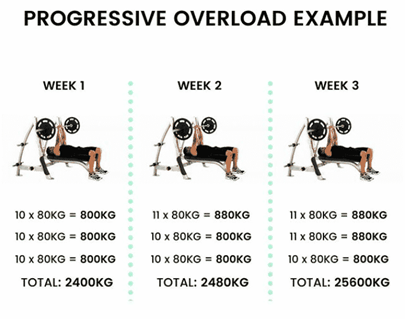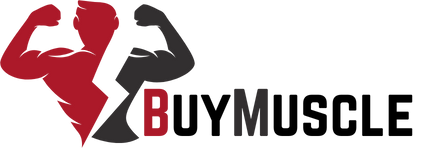If your workouts feel like they’ve hit a wall, you might be missing one key principle—progressive overload. It’s not just a buzzword in fitness circles; it’s the backbone of every real transformation, whether you’re chasing muscle mass, greater strength, or long-term endurance.
Progressive overload is the consistent and strategic increase in training demand over time. It is what allows the body to adapt and grow stronger continually. Without it, even the most disciplined training program will eventually stagnate.
What Is Progressive Overload?
Progressive overload involves steadily increasing the training demands on the body to stimulate continual adaptation and improvement. It follows a simple physiological principle: the body adapts to the stress it encounters. To continue improving, you must systematically increase the challenge.
This approach is not exclusive to weightlifting. It applies to endurance sports, bodyweight training, rehabilitation, and virtually every physical activity that aims for improvement.
The core idea is that your muscles, bones, nervous system, and cardiovascular system all adapt when you push them slightly beyond their current capabilities. Repeating the same workload will only maintain your current level, not elevate it.
Why Progressive Overload Is Essential for Gains

Muscle growth, or hypertrophy, only occurs when the body challenges muscle fibers to a degree that signals the body to repair and grow. Progressive overload ensures that each workout provides a new stimulus to continue growing.
It also fuels consistent progress in strength training. Lifting heavier loads or moving through greater ranges of motion trains your nervous system to recruit more muscle fibers, enhancing force output over time.
This principle also helps avoid the dreaded workout plateau. Without increased training stress, the body stops adapting, leading to stalled results and diminished motivation. Progressive overload not only challenges the body physically but also reinforces mental discipline and training consistency.
Scientific studies consistently support progressive overload as the key to muscle growth and fitness development. It is a pillar of all structured athletic programming, from beginner routines to elite-level periodization systems.
Ways to Apply Progressive Overload
Multiple methods exist to apply progressive overload, each offering unique benefits:
- Increasing Weight: This principle directly challenges the muscles and is often the go-to for strength development.
- Adding More Reps or Sets: Even if the weight stays the same, doing more total volume enhances stimulus and promotes adaptation.
- Adjusting Rest Intervals: Decreasing rest time between sets increases metabolic stress and improves muscular endurance.
- Increasing the Frequency of Training: This method is particularly useful for intermediate athletes targeting lagging areas.
- Improving Exercise Form or Tempo: Slowing down the eccentric phase adds intensity without changing the external load.
Advanced lifters may incorporate techniques like supersets, drop sets, or rest-pause training to increase the challenge further.

Signs You’re Not Using Progressive Overload Properly
If you find yourself lifting the same weights month after month, it’s a clear sign that progressive overload has stalled. A lack of visible progress in strength, size, or endurance usually means that you no longer push your body.
Another red flag is when workouts feel “easy” or become purely habitual. Effective training should feel challenging and purposeful. If there is no soreness, fatigue, or recorded progression, it is likely you’re simply maintaining rather than improving.
This stagnation not only limits physical growth but can reduce motivation and cause training plateaus to persist for weeks or even months.
How to Track and Plan Overload Progress

To effectively apply progressive overload, you need a system for tracking progress. A training log—whether physical or digital—should capture key data, such as weight lifted, reps completed, sets performed, and rest periods.
Establishing weekly or monthly micro-goals allows for manageable and measurable growth. These include adding five pounds to a lift, completing one extra rep, or shaving a few seconds off rest times.
A method called periodization is particularly effective for balancing intensity and recovery. It involves alternating periods of increased load with lower-intensity phases to allow for adaptation and prevent burnout.
Strategic planning is critical. Trying to increase every variable at once often leads to overtraining. A sustainable progression plan focuses on one or two changes at a time for long-term results.
Mistakes to Avoid with Progressive Overload
One of the most common mistakes is adding weight too quickly, which often leads to poor form and an increased risk of injury. Progress should be measurable but not reckless.
Another critical error is neglecting the recovery and deload phases. Balance progressive overload with rest to allow the body to adapt and grow. Constant high intensity without reprieve will lead to diminished returns and possible regression.
Many individuals also ignore mobility and joint health while chasing numbers. Overloading dysfunctional movement patterns leads to breakdowns in performance and injury.
Lastly, comparing your progress to others can derail your personal growth. Focus on individual progression, not external benchmarks. Your body responds to your training, not someone else’s program.
Who Should Use Progressive Overload? (Everyone!)
Progressive overload is not just for elite athletes or powerlifters. Beginners need to provide a clear structure for safe and effective improvements in strength, coordination, and confidence.
Intermediate lifters benefit from progressive overload to break through plateaus and continue making gains after the initial phase of rapid progress slows down.
Advanced athletes rely on more nuanced versions of overload, such as periodized intensity cycles and volume manipulations, to fine-tune their performance.
This principle is also vital in rehabilitation, functional training, and even fat loss programs, where increasing training demand is crucial for continual progress.
Frequently Asked Questions
How do I know if I’m using progressive overload correctly?
You should track your workouts and see gradual increases in strength, volume, or performance. If you’re progressing over time without injury or fatigue, you’re likely on the right path.
How often should I increase the weight or the number of reps?
Every 1 to 2 weeks is typical, depending on the lift and your recovery. Small, regular increases are more sustainable than big jumps.
What happens if I don’t use progressive overload?
Your body will stop adapting, which can lead to plateaus. You’ll maintain your current level but won’t see further improvements in size, strength, or endurance.








